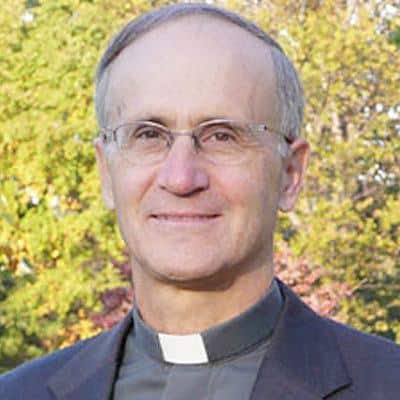January 17, 2022

Twenty-one years ago the Paulist leadership asked me to leave my twenty-two years of ecumenical ministry in Canada and come back to the U.S. to found and develop a Paulist national office for ecumenical and interfaith relations. As you might imagine, leaving a country where I’d taken on dual citizenship and worked in all ten of its provinces required a deep “letting go” of regular relations with many people and networks. But I knew it would also be energizing and relationally enriching to come back to my home country.
We decided to locate the office at our Paulist headquarters in New York City, adjacent to our “mother church” there, St. Paul the Apostle in mid-town Manhattan. Once settled in, I asked myself “Where to begin?” Given that Christian unity and interreligious relations are both all about essentially that—relations—one of the first ideas that came up was to create a means of communication that could extend far-and-wide. Namely, a journal or newsletter.
I had served as the editor of the quarterly journal Ecumenism published in both French and English by the Montreal-based Canadian Centre for Ecumenism (CCE) and knew from experience how serviceable this means of communication can be in laying the groundwork for and deepening the mission of the work for Christian unity.
But given that in this new setting I would not have a staff of seven or eight people to assist with the range of ministerial undertakings as had been the case in Montreal, but would be a “staff of one”, I knew that a newsletter/journal would have to be “shorter” and “thinner,” but a means of communication, education, and relationship-building nonetheless.
And the nomenclature for it that soon surfaced was the word Koinonia.
Why that? Well, koinonia is a transliterated form of a Greek word I’d learned in my theology studies, a word that refers to concepts such as partnership, joint participation, communion, the share which one has in anything; a gift jointly contributed, a collection, a contribution. It identifies the idealized state of fellowship and unity that should exist within the Christian church, the body of Christ.
So that’s what I decided to go with for the title, a rich and multi-layered Greek word! And while at the Collegeville Ecumenical Institute this Fall in Minnesota, the new president of the North American Academy of Ecumenists, Liza Anderson, affirmed that the word is not empty but is bearing fruit when she expressed in a conversation her appreciation for it.
Needless to say, I am grateful to my successor, Fr. James Diluzio, CSP, for the time and energy he will invest in keeping it alive as a free, appreciated resource for it all its recipients. Do feel free to share it with others, and if there is a contribution you would like to make either in submitting an article or a financial donation, know that it will be gratefully received.
The Church as the sign of the unity of humankind under the reign of God provides a vision and a hope for a future of peace built on justice. The ecumenical movement can model the way in which different churches and cultures may exchange their gifts with one another for their mutual enrichment.
